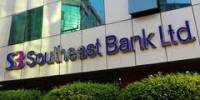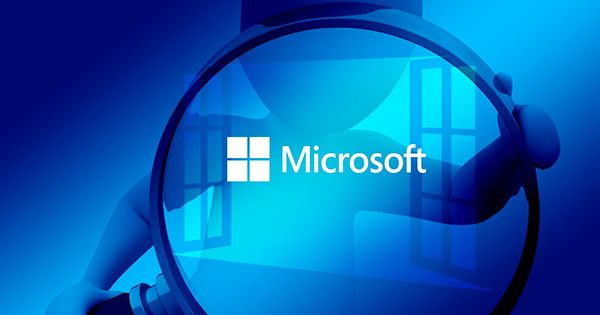FINANCIAL STATUS
NBL always maintains a prudent balance between Tier-I and Tier-2 capital. Total capital as on December 31, 2010 was Tk. 19,190.79 million and capital adequacy ratio was 12.29 %. National Bank Limited formulated befitting credit risk management criteria and strategies for creation of balanced lending mix in its portfolio both for short and long term with the bottom line objective to ensure risk adjusted rate of return in its credit transactions. Loan and advances in the year 2010 registered an increase by 41.26% to BDT 92,003.56 million from BDT 65,129.29 million in 2009. During the year 2010, the credit expansion mainly was in bilateral project finance, syndicate finance, export, import and trade finance as well as SME and Agri finance.
Summary of the Income Statement Item:
Figure in Million
| Particular | 2006 | 2007 | 2008 | 2009 | 2010 |
| Interest Income | 3674.32 | 4288.8 | 5786.71 | 7006.63 | 9616.14 |
| Interest Expense | 2449.76 | 2883.45 | 3594.84 | 4490.34 | 5577.09 |
| Net Interest Income | 1224.56 | 1405.35 | 2191.87 | 2516.29 | 4039.05 |
| Non Interest Income | 2054.48 | 2893.83 | 3106.36 | 3999.51 | 8995.97 |
| Non Interest Expenses | 2132.26 | 2134.08 | 2174.4 | 3118.11 | 4093.71 |
| Net Non Interest Income | -77.78 | 759.75 | 931.96 | 881.4 | 4902.26 |
| Profit before Tax & Provision | 1146.78 | 2215.1 | 3123.83 | 3397.5 | 8940.6 |
| Profit after Tax | 507.49 | 1238.11 | 1517.43 | 2070.47 | 6860.34 |
Net Profit: Efficient Board and management, strong capital base, wide branch network, support from other stakeholders helped NBL in revenue earnings and profit maximization. During the period NBL earned profit after tax BDT 6860.34 million with growth of 231.34% which has BDT 2070.47 in 2009.
Summary of the Balance Sheet Item:
Figure in Million
| 2006 | 2007 | 2008 | 2009 | 2010 | |
| Authorize Capital | 2450 | 2450 | 2450 | 7450 | 17500 |
| Paid up Capital | 805.47 | 1208.2 | 1872.72 | 2846.54 | 4412.13 |
| Reserve Funds & Surplus | 2468.78 | 3360.19 | 4253.55 | 6070.22 | 14693.47 |
| Shareholders’ Equity(capital& reserve) | 3274.25 | 4568.39 | 6126.27 | 8916.76 | 19105.6 |
| Deposits | 40350.87 | 47961.22 | 60187.89 | 76834.13 | 102471.8 |
| Cash (including balance with Bangladesh bank) | 2140 | 4473.08 | 5421.06 | 6843.69 | 8695.31 |
| Loans & Advances | 32709.68 | 36475.74 | 50665.07 | 65129.29 | 92003.56 |
| Investments | 6239.83 | 7760.38 | 9156.61 | 12315.2 | 24993.33 |
| Fixed Assets(including non banking assets) | 1627.29 | 1842.28 | 1981.6 | 2200.85 | 2609.46 |
| Total Assets | 46796.04 | 56526.96 | 72205.5 | 91931.63 | 134732.3 |
Loan and advances: In the year 2010 registered an increased by 41.26% to BDT 92,003.56 million from BDT 65,129.29 million in 2009. During the year 2010, the credit expansion mainly was in bilateral project finance, syndicate finance, export, import and trade finance as well as SME and Agri finance.
Total Assets: With the expansion of business, asset profile of the bank also increased. Total assets of the bank grew up by 46.56% to Tk. 134,732.31 million as at December 31, 2010 as against Tk. 91,931.63 million reported as on December 31, 2009. The significant increase in assets was achieved due to raise in loans and advances, investments, cash and balance with Bangladesh Bank and other financial institutions.
Cash: Cash in hand increased by Tk.184.14 million while the balances maintained with the Bangladesh Bank and its agents increased by 30.03% at the end of the December 31, 2010. The deposit growth increased the balances with Bangladesh bank and its agents for maintaining the Cash Reserve Requirement (CRR).
Investments: Investment portfolio of NBL consisting of government and private securities as on December 31, 2010 was Tk. 24,993.33 million registering a growth of 102.95% over previous year, out of which investment in Government securities was 60.08% and rest 39.92% in private securities. The growth is due to mainly purchase of Government Treasury Bills, Debentures and stocks.
Deposits: The deposit base of the bank registered a growth of 33.37% in the reporting year over the last year and stood at Tk. 102,471.83 million. Expansion of branch network, competitive interest rate and innovative deposit products contributed to the growth.
Shareholder Equity: In 2009, 55% stock dividend was declared which increased the amount of paid up capital to Tk. 4,412.13 million in 2010. Reserve and surplus was enhanced by 142.06% consisting of statutory reserve, general reserve, retained earnings and other reserve. Total shareholder’s equity as on December 31, 2010 stood Tk. 19,105.60 million.NBL has increased the authorized capital of the bank to Tk. 17,500 million .
Current Ratio: In 2009 was the highest current ratio and 2006 was the lowest current ratio indicator of National Bank Ltd. The Bank has been decreased their current ratio 1.88 % from 2009.
Liquid Securities Indicator: This ratio compares the most government securities an institution can hold with the overall size of its asset portfolio.
Government Securities / Total Assets*100
| Year | 2006 | 2007 | 2008 | 2009 | 2010 |
| Liquid Securities (%) | 10.89% | 11.32% | 9.19% | 9.34% | 11.15 % |
The graphical presentation of the ratio has been shown in the following way:
Liquidity Assets Ratio: Liquidity assets ratios are a set of ratios or figures that measure a company’s ability to pay off its short-term debt obligations.
Cash+Reserve+Govt. Securities/ Total Assets*10
| Year | 2006 | 2007 | 2008 | 2009 | 2010 |
| Liquid Assets (%) | 19.86% | 23.96% | 21.23%
| 21.69% | 24.72% |
The graphical presentation of the ratio has been shown in the following way:
The graph represents that, in 2010 is the highest and the 2006 is the lowest Liquidity Assets Ratio. National Bank Ltd. keeps 24.72 taka liquid assets against 100 taka total assets in 2010. National Bank Ltd. has increased their liquid assets 13.97 % from 2009. So this ratio is acceptable.
Capital Adequacy Ratio: Capital adequacy ratio (CAR) is a measure of how much capital is used to support the banks’ risk assets. It is calculated as follows:
Total Capital / Total Risk Weighted Assets *100
| Year | 2006 | 2007 | 2008 | 2009 | 2010 |
| Capital Adequacy Ratio (%) | 10.10% | 13.11% | 13.42% | 8.61% | 12.29% |
The graphical presentation of the ratio has been shown in the following way:
NBL always try to maintain a prudent balance between Tier-1 and Tier 2 capital. Total capital as on December 31, 2010 was tk. 19,190.79 million and capital adequacy ratio was 12.29%. Though in 2009 their capital adequacy ratio was decreased but in present scenario they improve their capital adequacy ratio.
Leverage Ratio: Leverage ratio indicate the capacity to meet up short and long term debt obligation.
Debt Equity Ratio: The Debt Equity Ratio (D/E) is a financial ratio indicating the relative proportion of shareholders’ equity and debt used to finance a company’s assets. It is calculated as follows:
Debt/Equity
| Year | 2006 | 2007 | 2008 | 2009 | 2010 |
| Debt Equity Ratio (Times) | 8.13 | 6.77 | 6.99 | 9.31 | 6.05 |
The graphical presentation of the ratio has been shown in the following way:
The graph represents that, in 2009 is the highest and the 2010 is the lowest Debt Equity Ratio.
Advance Deposit Ratio: Advance Deposit Ratio is the proportion of loans generated by banks from the deposits received. It is calculated as follows:
Loan & Advance/Deposit*10
| Year | 2006 | 2007 | 2008 | 2009 | 2010 |
| Advance Deposit Ratio (%) | 81.06 | 76.05 | 84.18 | 84.77 | 89.78 |
The graphical presentation of the ratio has been shown in the following way:
The graph implies that, In 2010 Credit Deposit Ratio is higher from comparing any year. In 2010 National Bank Ltd. has given loan 89.78 taka against 100 taka deposit and in 2009 given 84.77 taka. The bank has increased their credit deposit ratio 5.92 % from 2009. In December, 2010 Bangladesh Bank Regulation was 80.5% about advance deposit ratio.
Debt Ratio: Debt Ratio is a financial ratio that indicates the percentage of a company’s assets that are provided via debt. It is calculated as follows:
Total Debt/Total Assets*100
| Year | 2006 | 2007 | 2008 | 2009 | 2010 |
| Debt Ratio (%) | 93.00% | 91.93% | 91.51% | 90.28% | 84.16% |
The graphical presentation of the ratio has been shown in the following way:
The graph represents that, in 2010 is the lowest and the 2006 is the highest Debt Ratio. NBL has covered 84.16% assets from debt financing in 2010. Here the graph shows the line graph fall in consistently.
Activity Ratio: Activity ratio indicates how effectively firm is utilizing its asset. Here effectively means operating efficiency of the firm.
Total Assets Turnover: Total Asset Turnover is a financial ratio that measures the efficiency of a bank’s use of its assets in generating interest income. It is calculated as follows:
Interest Income / Assets*100
Year | 2006 | 2007 | 2008 | 2009 | 2010 |
Total Assets Turnover (%) | 7.85% | 7.59% | 8.01% | 7.62% | 7.14% |
The graphical presentation of the ratio has been shown in the following way
In 2008 is the highest total assets turnover and 2010 is the lowest total assets turnover of National Bank Ltd. The bank has been decreased their total assets turnover 6.3% from 2009.
Profitability Ratio: Profitability ratio indicates that the firms net return on sales and assets.
Return on Assets (ROA): The return on assets ratio measures how efficiently profits are being generated from the assets employed. It is calculated as follows:
Net Income/ Total Asset*100
Year | 2006 | 2007 | 2008 | 2009 | 2010 |
ROA (%) | 1.19% | 2.40% | 2.36% | 2.52% | 6.05% |
The graphical presentation of the ratio has been shown in the following way:
The graph implies that, in 2010 is the highest and the 2006 is the lowest ROA indication of National Bank Ltd National Bank Ltd. has increased their ROA 140.08 % from 2009. So this ratio might be accepted.
Return on Equity (ROE): Return on equity measures a bank’s profitability by revealing how much profit a bank generates with the shareholders investment. It is calculated as follows:
Net Income/ Total Shareholder Equity*100
Year | 2006 | 2007 | 2008 | 2009 | 2010 |
ROE (%) | 16.89% | 31.57% | 28.38% | 27.53% | 48.96% |
The graphical presentation of the ratio has been shown in the following way:
The graph implies that, in 2010 is the highest and the 2006 is the lowest ROE indication of National Bank Ltd.
Earnings per Share (EPS): The portion of a company’s profit allocated to each outstanding share of common stock. It is calculated as follows:
Net Income/ Total number of shares outstanding
Year | 2006 | 2007 | 2008 | 2009 | 2010 |
EPS(TK.) | 6.30 | 6.61 | 5.33 | 4.69 | 15.55 |
The graphical presentation of the ratio has been shown in the following way:
The graph implies that, in 2010 is the highest and the 2009 is the lowest EPS indication of National Bank Ltd. The bank has been provided 15.55 taka net income against per share in 2010. National Bank Ltd. has been increased their net income 231.34 % from 2009. So this ratio may be accepted.
Net Interest Margin: Net Interest Margin (NIM) is a measure of the difference between the interest income generated by banks or other financial institutions and the amount of interest paid out to their lenders. It is calculated as follows:
(Interest Income – Interest Expense) / Total Asset
| Year | 2006 | 2007 | 2008 | 2009 | 2010 |
| NIM (%) | 2.62% | 2.57% | 3.04% | 2.74% | 3% |
The graphical presentation of the ratio has been shown in the following way:
The graph implies that, in 2008 is the highest and the 2007 is the lowest Net Interest National Bank Ltd. has increased their Net Interest Margin 9.49 % from 2009. This is a good sign for the bank because interest income is the main source of revenue for a bank. So this ratio might be accepted.
Net Profit Margin: Net profit margin shows that how much profit to earn in a year.
Profit after Tax / Interest Income *100
| Year | 2006 | 2007 | 2008 | 2009 | 2010 |
| Net Profit Margin (%) | 13.81% | 28.87% | 26.22% | 29.55% | 71.34% |
The graphical presentation of the ratio has been shown in the following way:
The bank has been achieved extraordinary profit in 2010. The banks generated net profit 71.34 taka when interest income 100 taka in 2010. NBL has been increased their Net Profit Margin 141.42 % from 2009.Though maximization of wealth is a main objective of bank, but profit maximization is also focus .
Operating Expense Turnover: Operating Expense Turnover is the efficiency ratio gives us a measure of how effectively a bank is operating. It is calculated as follows:
Operating Exp. /Interest Income*100
| Year | 2006 | 2007 | 2008 | 2009 | 2010 |
| Operating Expenses Turnover (%) | 58.03% | 49.76% | 37.58% | 44.50% | 42.57% |
The graphical presentation of the ratio has been shown in the following way:
The graph implies that, in 2006 National Bank Ltd. is the highest and in 2008 is the lowest operating expense against its interest income. In 2010 National Bank Ltd. was 42.57 tk. total operating expense against its 100 tk. interest earning. NBL has been decreased their operating expense turnover 4.34 % from 2009.
Price Earnings Ratio: Price Earnings Ratio (P/E) is a valuation ratio of a company’s current share price compared to it’s per share earnings. It is calculated as follows:
Market Price per Share/EPS
| Year | 2006 | 2007 | 2008 | 2009 | 2010 |
| P/E (Times) | 12.07 | 28.03 | 13.95 | 13.77 | 12.32 |
The graphical presentation of the ratio has been shown in the following way:
The graph implies that, in 2007 is the highest and the 2006 is the lowest P/E indication of National Bank Ltd. In 2010 companies Price Earnings Ratio is 12.32 times that is better from 2008 & 2009. National Bank Ltd. has decreased their P/E 10.53 % from 2009.
Market Price per Share: Market price per share is an useful analytical tools which determine when an investment in accompanying worthwhile.
EPS* Price Earnings Ratio
| Year | 2006 | 2007 | 2008 | 2009 | 2010 |
| Market Price per Share (TK.) | 76.05 | 149.40 | 101.43 | 64.63 | 191.60 |
The graphical presentation of the ratio has been shown in the following way:
The graph implies that, NBL has been increased their market price per share 196.64% from 2009. The main reasons of these changes are the banks has been increased their net income 231.34 % from 2009 so ultimately increased their EPS and the percentage changes in increasing EPS are 231.56 % from 2009.
Book Value per Share: Book value per share indicates the value of each share stock. It calculated as follows:
Equity/Number of Common Shares Outstanding
The graphical presentation of the ratio has been shown in the following way:
SOWT ANALYSIS:
SWOT Analysis is an important tool for evaluating the companies Strengths, Weaknesses, Opportunities and Threats. It helps the organization to identify how to evaluate its performance and can scan the macro environment, which is turn would help the organization to navigate in the Turbulence Ocean of competition. Following is given the SWOT analysis of National Bank Ltd:
Strengths
1. Top Management
The top management of the bank, the key strength for NBL has contributed heavily towards the growth and development of the bank.
2. Company Reputation
The reputation of the bank is increasing day by day. People are relying on this bank gradually.
3. Sponsors
The sponsors of the bank are some of the top companies and top business personnel of our country.
4. Modern Facilities and Computer
For speedy service to the customer, NBL had installed money-counting machine in the teller counter. The bank has computerized banking operation under software called PC banking. More over computer printed statements are available to internal use and occasionally for the customers. NBL is equipped with telex and fax facilities
6. Interactive Corporate Culture:
The corporate culture of NBL is very much interactive compare to other local organization. This interactive environment encourages the employee to work attentively.
Weaknesses:
1. Limitation of Information System (PC Bank):
PC bank is not comprehensive banking software. It is desirable that a more comprehensive banking system should replace PC bank system.
2. Hierarchy Problem:
The hierarchy problem treated as a weakness for NBL, because the employee will not stay for a long. So there will be a chance of brain drain from this bank to other bank.
3. Advertisement Problem:
There is another weakness for NBL is advertisement. Their media coverage is so much low that people do not know the bank thoroughly.
Opportunities
1. Diversification
National Bank can pursue diversification strategy in expanding its current line of business.
2. Business Banking
The investment potential of Bangladesh is foreign investors. So NBL has opportunity to expand in business banking.
3. Credit Card
There is an opportunity to launch Credit Card in Bangladesh by NBL. Beside this, NBL can acquire services for cards like VISA, MASTER CARD etc. So that they can enhance the market based card service.
Threats:
1. Contemporary Banks
The contemporary banks of National Bank like: Dhaka Bank, Dutch Bangla Bank, The Trust Bank, Mercantile Bank is its major rivals. NBL should remain vigilant about the steps taken by these banks, as these will in turn affect NBL strategies.
2. Multinational Bank
The Rapid expansion of multinational bank poses a potential threat to new PCB’s. Due to the booming energy sector, more foreign banks are expected to operate in Bangladesh. Moreover, the existing foreign banks such as HSBC, AMEX, CITI N.A, and Standard Chattered are now pursing an aggressive branch expansion strategy
3. Default Culture
Default culture is very much familiar in our country. For a bank, it is very harmful. As National Bank is new, it has not faced it seriously yet. However as the bank grows older it might become big problems.
















